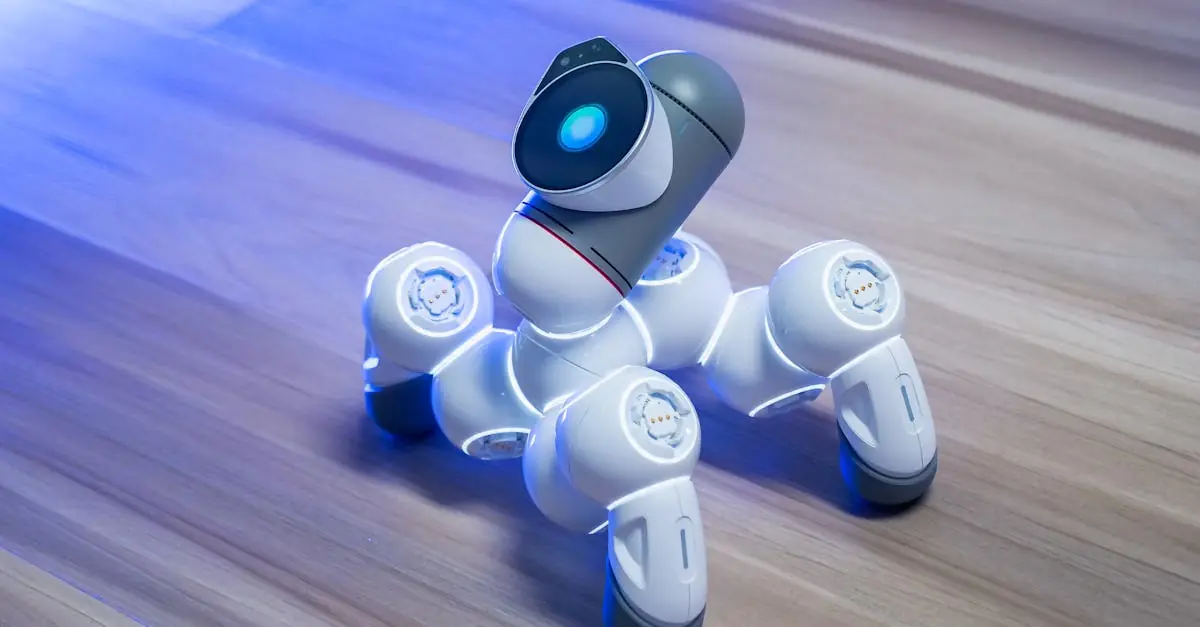Imagine walking into your home and having the lights adjust to your favorite setting, the thermostat perfectly tuned, and your favorite music playing—all without lifting a finger. Welcome to the world of home automation, where convenience meets creativity. But let’s be honest, if you think just buying smart gadgets is enough, you might as well be trying to bake a cake with just flour.
In this article, we’ll dive into advanced tips that’ll turn your humble abode into a smart haven. From quirky automation tricks that’ll impress your friends to practical hacks that’ll save you time and energy, there’s something for everyone. Get ready to unleash your inner tech wizard and transform your living space into a futuristic paradise—because who wouldn’t want a home that practically runs itself?
Table of Contents
ToggleOverview of Home Automation
Home automation enhances daily living through convenience and efficiency. This system allows individuals to control various aspects of their homes, such as lighting, heating, and security, using smart devices. Homeowners can set schedules to optimize energy consumption. For instance, smart thermostats automatically adjust temperatures based on the inhabitants’ routines.
Security systems equipped with cameras and motion sensors provide peace of mind, alerting owners of unusual activities. Smart speakers serve as voice-activated hubs for controlling multiple devices simultaneously.
Integration is a key element for maximizing home automation’s potential. Various platforms, such as Google Home, Amazon Alexa, and Apple HomeKit, enable seamless communication between devices. Compatibility with devices is crucial for creating an interconnected system.
Customization also plays a significant role in automation. Homeowners can create distinct scenes that combine different devices for specific situations, like a “movie night” scene that dims the lights and adjusts the thermostat.
Monitoring home systems remotely is an essential feature of home automation. Users can access their devices through smartphone applications to make adjustments or receive notifications on their energy usage or security alerts.
This ecosystem fosters energy savings while enhancing convenience. Home automation represents a forward-thinking approach that transforms ordinary houses into efficient, intelligent living spaces. Engaging with these advanced systems inspires creativity in achieving a smarter environment.
Understanding the Basics
Home automation involves integrating various smart devices into a cohesive system. These systems enhance everyday living through convenience and efficiency.
Key Components of Home Automation
Smart sensors play a vital role in home automation. They detect changes in the environment, triggering responses like turning on lights when someone enters a room. Smart thermostats help maintain optimal temperatures based on user habits. Security cameras provide real-time monitoring, ensuring safety and peace of mind. Smart speakers act as central control hubs, allowing voice command integration of diverse devices. These components work together to create an interactive and responsive home environment.
Benefits of Home Automation
Automation significantly improves energy efficiency. Smart lighting systems adjust based on occupancy, leading to reduced energy usage. Convenience is another major benefit; users can control home systems from anywhere via smartphone apps. Cost savings arise from optimized energy consumption, translating into lower utility bills. Enhanced security features, including motion detectors and surveillance alerts, boost safety levels. Lastly, automation fosters a more personalized living experience, allowing homeowners to tailor settings to specific preferences and routines.
Advanced Home Automation Tips
Advanced home automation offers innovative ways to enhance daily living. Integrating various technologies efficiently optimizes convenience, security, and energy management.
Integrating Smart Devices
Choose devices compatible with a single platform to streamline control. Smart hubs like Google Home or Amazon Alexa enable seamless communication between gadgets. Prioritize devices that offer API support for future flexibility. Connecting appliances and systems can lead to a more responsive environment. For instance, linking lights to motion sensors automates illumination when someone enters a room.
Automating Security Systems
Enhance security by integrating cameras, motion detectors, and smart locks into one system. Real-time notifications inform homeowners of any suspicious activity. Scheduled locking and unlocking of doors improve access management. Dusk-to-dawn schedules for outdoor lights deter potential intruders. Utilize video doorbells to monitor front entrances and communicate directly with visitors.
Energy Management Techniques
Optimize energy use with smart thermostats that learn user habits. Set schedules that align with daily routines to maximize efficiency. Implement energy monitoring systems to track consumption patterns. Consider using smart plugs that control high-energy appliances remotely. Integrating solar panels with energy storage solutions provides renewable alternatives, reducing overall energy bills.
Customizing Your Automation Experience
Personalizing home automation enhances user experience and maximizes efficiency. He or she can achieve greater control through tailored routines and improved voice commands.
Creating Personalized Routines
Establishing personalized routines simplifies daily tasks. Users program their devices to follow specific schedules, such as turning on lights at sunset or adjusting thermostats before bedtime. Morning routines can activate coffee makers and play news updates. A regular evening routine might include dimming lights and locking doors automatically. Advanced users can use geofencing features, ensuring systems respond when they arrive home. Crafting these routines allows them to align with individual lifestyles, offering convenience and energy savings.
Voice Control Optimization
Maximizing voice control capabilities empowers users to interact seamlessly with their devices. Users should ensure smart speakers are placed strategically throughout their homes for optimal performance. They can enhance voice recognition by training devices to recognize specific phrases or personal voices. Custom voice commands streamline interactions, making tasks like turning off lights or adjusting temperatures more intuitive. By linking voice assistants with various smart home systems, users can execute multiple tasks simultaneously. Prioritizing voice control improves accessibility, allowing for hands-free management of home automation.
Troubleshooting Common Issues
Home automation can present challenges. Addressing connectivity problems and device compatibility ensures a smoother user experience.
Connectivity Problems
Connectivity issues often disrupt the seamless operation of smart devices. Weak Wi-Fi signals frequently result in devices becoming unresponsive. Moving the router closer to the smart gadgets typically improves connectivity. Ensuring firmware is up to date also resolves many common glitches. Restarting the router can provide a quick fix to temporary disruptions. Additionally, utilizing a mesh Wi-Fi system enhances coverage in larger homes. Creating separate networks for smart devices could isolate traffic efficiently, ensuring better performance.
Device Compatibility
Device compatibility plays a crucial role in home automation systems. Not all smart home devices work with every hub, leading to frustrations during setup. Before purchasing, checking compatibility with existing systems like Google Home or Amazon Alexa is essential. Using a universal hub can simplify interaction among different brands. Employing devices that adhere to common standards, such as Z-Wave or Zigbee, increases the likelihood of successful integration. Reading user reviews helps identify potential compatibility issues before installation. Regular updates from manufacturers can also resolve lingering incompatibilities with new apps or devices.
Embracing home automation opens up a world of possibilities for enhancing daily life. By integrating smart devices into a cohesive system, individuals can enjoy convenience and efficiency like never before. Advanced tips for customization and optimization empower users to create a truly personalized experience.
As technology continues to evolve, staying informed about the latest innovations and best practices will ensure that homes remain at the forefront of smart living. Whether it’s through energy management or enhanced security features, the journey toward a smarter home is filled with exciting opportunities. With creativity and a bit of tech-savvy, anyone can transform their living space into a futuristic haven that meets their unique needs.








